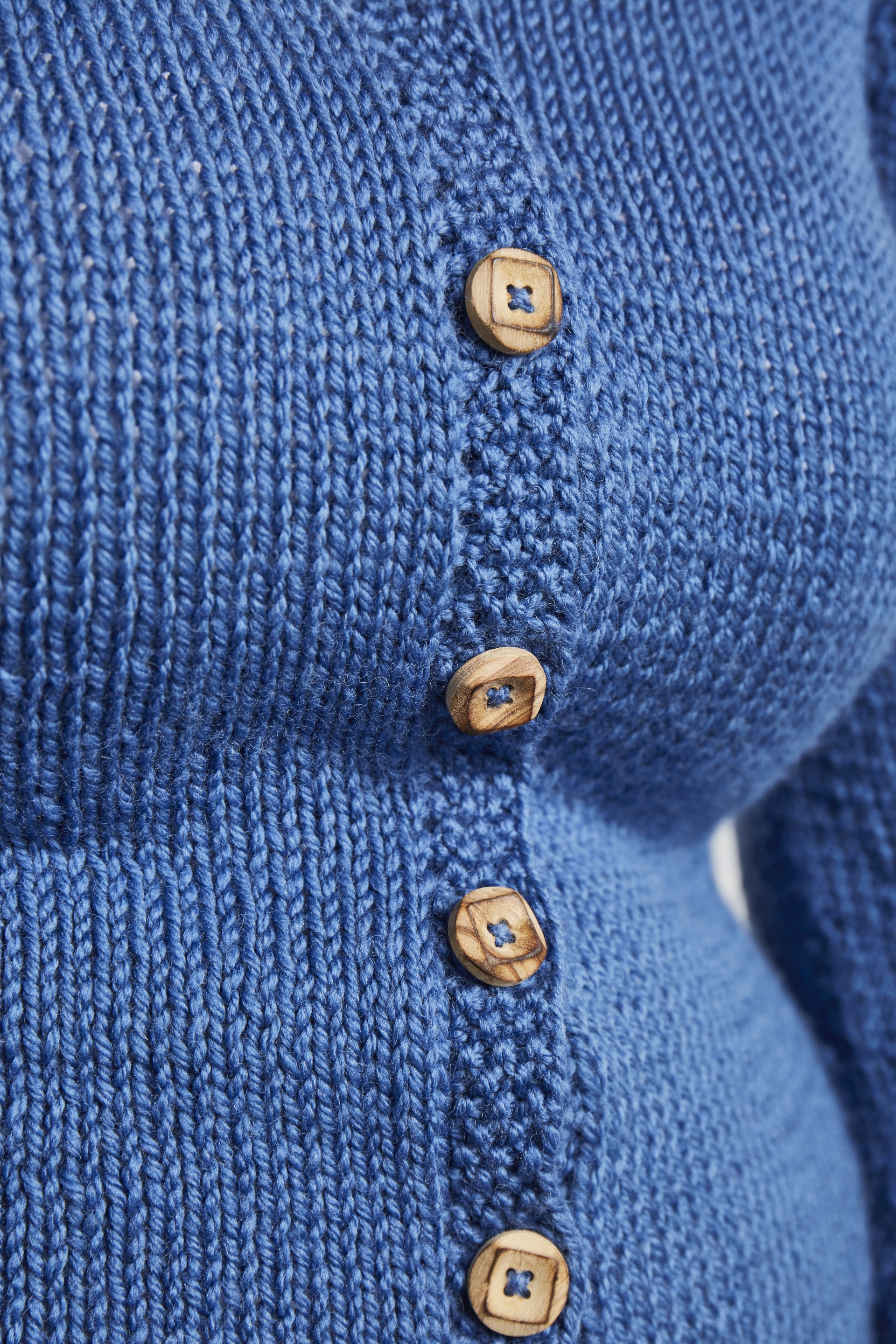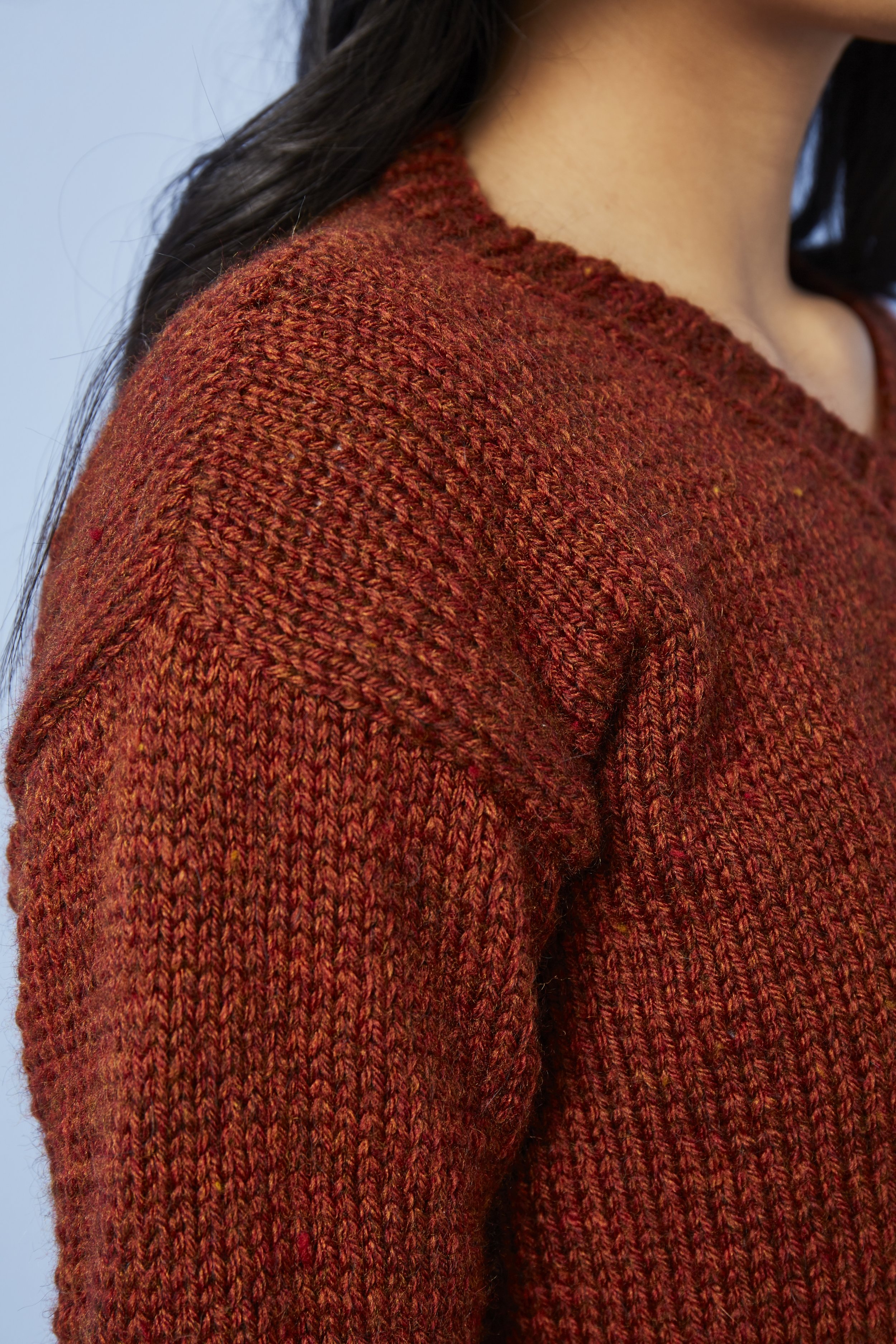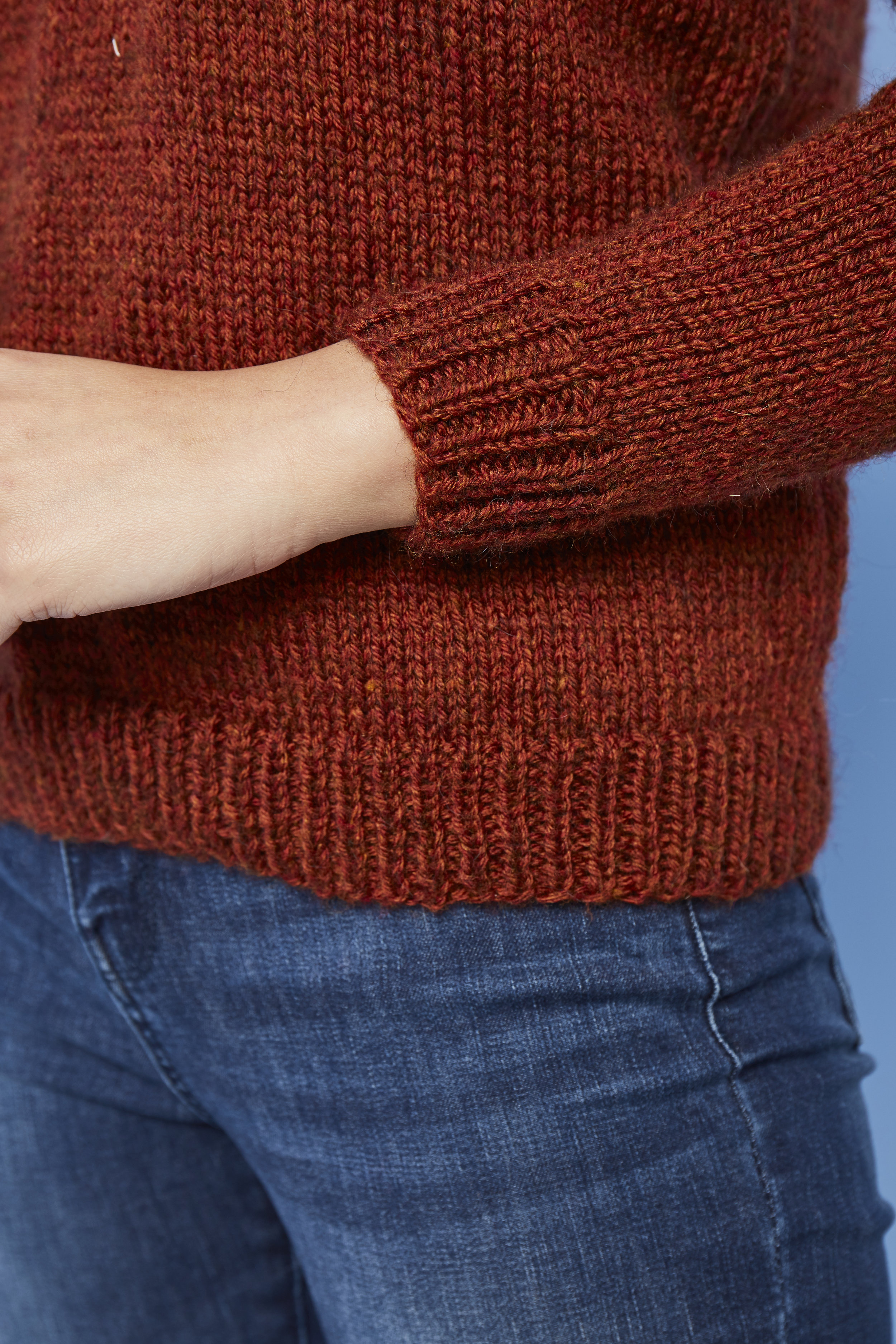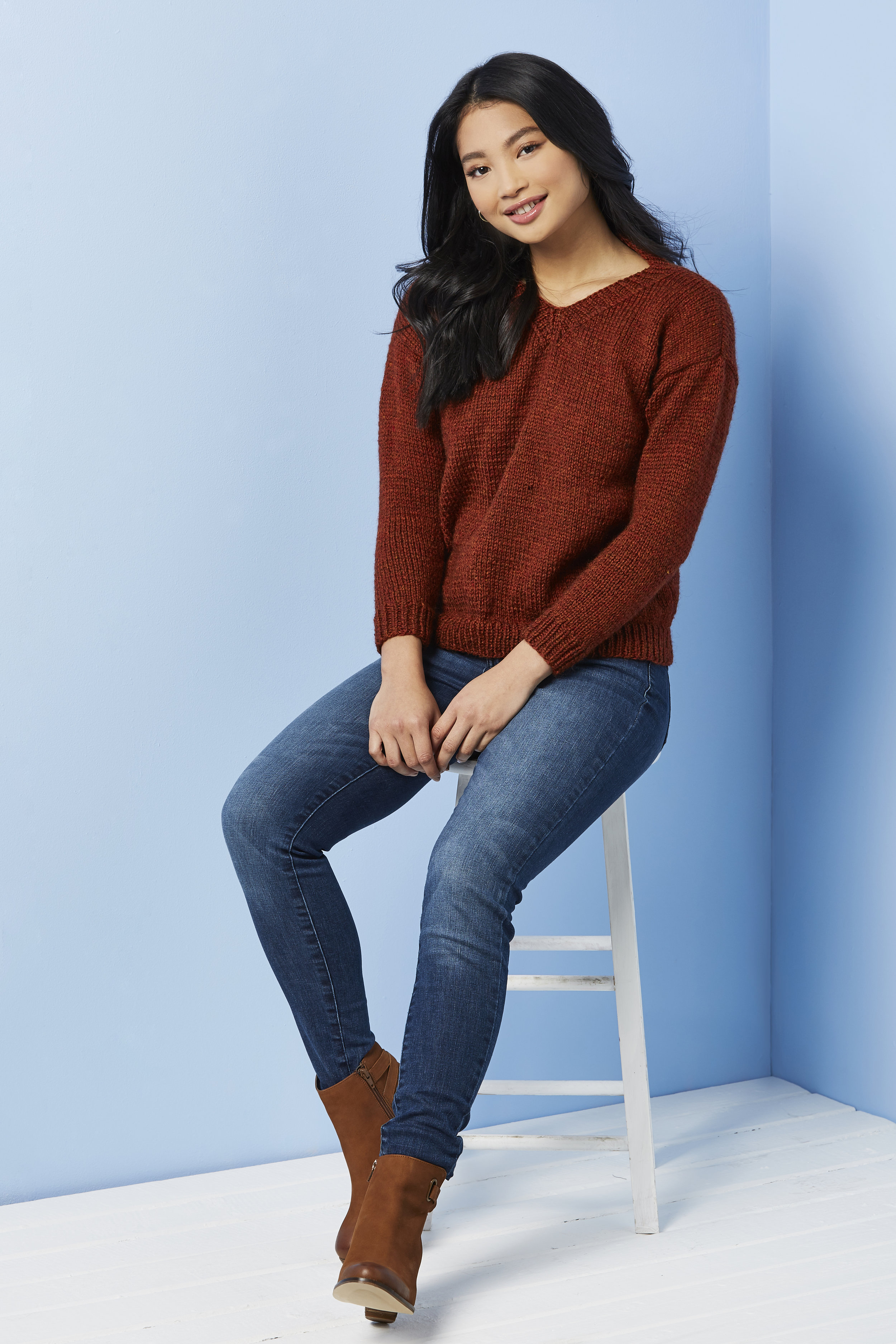Let’s set the scene. It’s 1980 in a small office in one of Africa’s capital cities. A large machine that looks a bit like a giant typewriter starts to hum and clatter. From an opening at the front, inch-wide paper tape starts to appear, intricately punched with holes in groups of five across the width. A small girl rushes up to the machine, holds the tape up sideways and starts to read it out loud. She only looks old enough to just about be reading ordinary English text, but she can read the punched tape at sight.
That little girl was me, and the machine was a telex machine, common in international offices back in the day. Text could be sent and received over the telephone lines and also via shortwave radio links - think of it as an early ancestor of fax machines and SMS.
A teleprinter at Hack Green
The skill of reading that tape has ebbed as time has passed, but it still fascinates me, and for a long time I’ve been contemplating how to incorporate the coding in a piece of knitting.
Telex tape was a mechanical system for making a physical copy of the electronically transmitted message using sprocket tape (a line of tiny holes down the centre of the length enabled the tape to be moved through the machine on a system of sprockets) with punched holes in a 5-space coding system. Two holes before the sprocket and three after made it easy to tell which way round the tape should be read (although young-me adds that it’s perfectly possible to read it from the reverse side). There aren’t enough combinations of holes for all the possible lower and upper case letters, numbers and punctuation, so there are ‘shift’ codes to move between cases or into the figures system and an equivalent to move back into letters.
The tape could then be converted into typewritten text using the machine, but I suspect it was quicker and saved paper and ink ribbon to just read a message off the tape, and only make a typed printout if necessary.
If you want to see a machine in action, there are a couple of films on YouTube here.
I played about with all sorts of ideas as to how to ‘knit it’, from simple replication of lacy holes to colourwork, to crossed cables but nothing seemed to really click. I put the project aside - fallow time sometimes helps when you’ve run out of ideas.
Fast forward a few months to a work assignment editing a pattern for a pair of socks where the design used quarter circle tiling. Two 64-cell simple colourwork patterns that are mirror images of one another were being used in a random sequence to produce an interesting snaking line of contrast over the fabric of the socks. The contrast between the random assignment of the tiles and the sinuous nature of the resulting ‘pattern’ appealed to me and I’d also been working on another pattern (for a different designer) which was all about aperiodic tiling. Interest was piqued and I started to dig about a bit to find out more about quarter circles. It turns out the key player was a chap called Sébastien Truchet, a Dominican Priest active around 1700!
The lightbulb moment was when I realised those quarter tiles could form a very nice A/B encoding to represent hole/paper in my tape. The resulting ‘pattern’ wouldn’t repeat predictably, but would be cohesive and I thought the snaking line would make a pleasing representation of the telephone wires integral to the messaging system. Since telex tape is long and thin, the natural item to be thinking about making was a scarf. I was keen that the results should be reversible, so double-knitting seemed to be the way to go, but in contrast to the ‘real’ tape, I wanted my project to be readable from both sides in the ordinary way from left to right. That meant that the two sides of the fabric were going to be different, because the message would start at opposite ends of two sides of the finished scarf. After quite a few false starts with swatches, I worked out how to notate the ‘different’ stitches - where the yarn colour would be opposite to what would be expected in ordinary double-knitting. Incidentally, if you’re not familiar with double-knitting, there’s a useful explanation here.
So far so good, and after a lengthy session of work in a spreadsheet, I had my message encoded and the charts drawn. Now all that was needed was the yarn. It had to be contrasting, but not too ‘black and white’ because I find that makes it difficult to actually work - when you chart double knitting you use black and white, but for half the rows the colours are reversed so I find it helps to think of the two colours as ‘plain and contrast’ and even easier if they’re not too dissimilar. Luckily, the Yarndale wool show was coming up, so I set yarn for this project as one of my shopping goals for the day.
Chatting with some colleagues at Yarndale who run The Cone Exchange (a brilliant enterprise where unwanted textile and yarn items are repurposed by their clients and then sold at shows like Yarndale) I explained that I was looking for some fairly traditional, fairly thin and fairly woolly yarn for my project. It turned out they had the perfect stuff! Ancient but perfectly serviceable wool on bobbins, complete with a label! That dated it to certainly before 1986 (when the manufacturing company J. Hysop Bathgate ceased trading) but looking at the typeface and quality of the paper I suspect it’s actually much older.
When I unwound the yarn wrapping the label, some inked text was revealed that gave the shade as ‘New Camel’. That colour was perfect for slightly sun-baked teletype tape and I experimented with various other yarns, in the end settling for the Hysop Bathgate yarn held double as one strand, and some Marriner DK that I acquired some years ago as the other. Marriners were one of Britain’s longest serving yarn companies, apparently dating back to 1784 and seemingly only going out of business quite recently (incidentally I’d be delighted to be corrected if anyone knows that they’re still going after all).
I’ve got about 12% into the final project now and it’s going well, although wanting a dense fabric means it’s got to be worked on tiny needles which is quite hard on the hands. Doing about two letters at a time is enough in one session so I think it’s going to keep me going for a while! When it’s finished I’ll post some photos of the whole thing and maybe even have a competition to see if anyone can decode it.



















